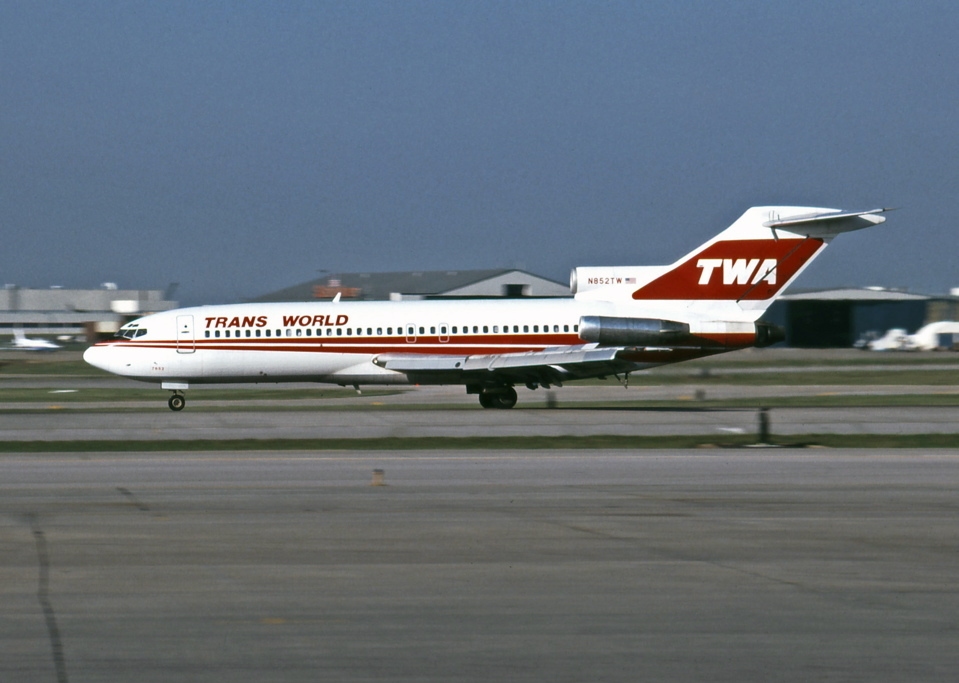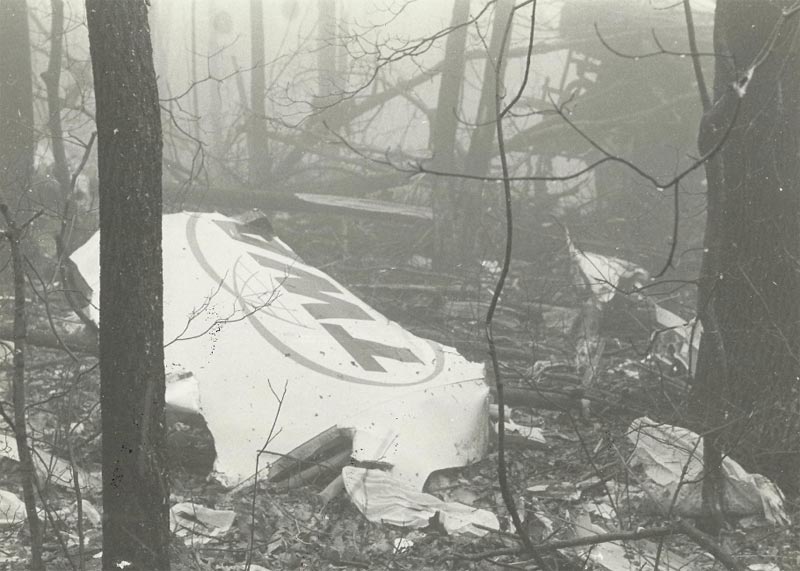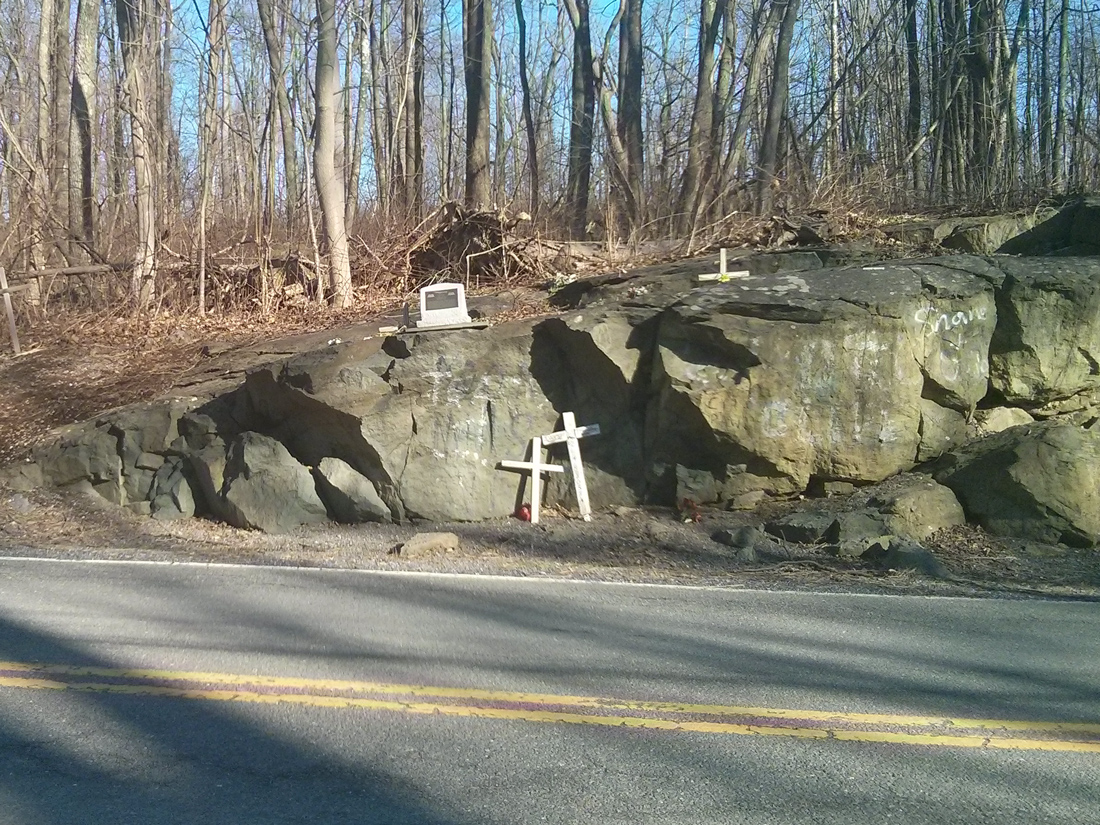1 December 1974 - TWA 514
TWA Flight 514, registration N54328, was a Boeing 727-231 enroute from Indianapolis, Indiana, and Columbus, Ohio, to Washington Dulles International that crashed into Mount Weather, Virginia, on December 1, 1974. All 85 passengers and 7 crew members were killed.
The flight was originally destined for Washington National Airport. However, the plane diverted to Dulles when high crosswinds, east at 28 knots and gusting to 49, prevented safe operations on the main north-south runway at Washington National. The flight was being vectored for a non-precision instrument approach to runway 12 at Dulles. Air traffic controllers cleared the flight down to 7,000 feet before clearing them for the approach while not on a published segment.

The plane began a descent to 1,800 feet shown on the first checkpoint for the published approach. The data recorder indicated there was some confusion in the cockpit over whether they were still under a radar controlled approach segment which would allow them to descend safely. After reaching 1,800 feet there were some 100 to 200 foot altitude deviations which the flight crew discussed as encountering heavy downdrafts and reduced visibility in snow. The plane impacted Mount Weather at 1,670 feet above sea level.
The accident investigation board was split in its decision as to whether the flight crew or Air Traffic Control was responsible. The majority absolved the controllers as the plane was not on a published approach segment. The dissenting opinion was that the flight had been radar vectored. No clear indication had been given by controllers to the flight crew that they were no longer on a radar vector segment and therefore responsible for their own navigation. Procedures were clarified after this accident. Controllers now state, "Maintain 7,000 until established on the approach". Ground proximity detection equipment was also mandated for the airlines.
During the NTSB investigation, it was discovered that a United Airlines flight had very narrowly escaped the same fate during the same approach and at the same location only six weeks prior.
The flight is also of note in that it drew undesired attention to the Mount Weather facility, which was the linchpin of plans implemented by the United States to ensure continuity of government in the event of a nuclear war. The crash did not damage the facility, since most of its features were underground. Only the facility's underground main phone line was severed, with service to the complex being restored by C&P Telephone within 2½ hours after the crash.

Download the full NTSB report
Transcript of the Cockpit Voice Recorder (CVR)
Voices are identified thus: Capt--Captain, FO--First Officer, and FE--Flight Engineer.
11:04 Capt: "Eighteen hundred [feet] is the bottom."
FO: "Start down. We're out here quite a ways. I better turn the heat down [probably referring to cabin heat]."
11:06:15 FO: "I hate the altitude jumping around." Then he commented that the instrument panel was bouncing around.
11:06:15 Capt: "We have a discrepancy in our VORs, a little but not much. Fly yours, not mine."
11:06:27 Capt discusses the last reported ceiling and minimum descent altitude and concluded: "...should break out."
11:06:42 FO: "Gives you a headache after awhile, watching this jumping around like that."
11:07:27 FO: "...you can feel that wind down here now."
Capt: "You know, according to this dumb sheet [referring to the instrument approach chart] it says thirty-four hundred to Round Hill--is our minimum altitude." The FE asked where the captain saw that, and the captain replied, "Well, here. Round Hill is eleven-and-a-half DME."
FO: "Well, but...."
Capt: "When he clears you, that means you can go to your...."
Unidentified: "Initial approach."
Unidentified: "Yeah."
Capt: "Initial approach altitude."
FE: "We're out of twenty-eight for eighteen."
Unidentified: "Right; one to go." [meaning 1,000 feet more before reaching the supposed level-off altitude of 1,800]
11:08:14 FE: "Dark in here."
FO: "And bumpy too."
11:08:25 Altitude alert horn sounds.
Capt: "I had ground contact a minute ago."
FO: "Yeah, I did too."
11:08:29 FO: "...power on this [expletive]."
Capt: "Yeah, you got a high sink rate."
FO: "Yeah."
Unidentified: "We're going uphill."
FE: "We're right there, we're on course."
Two voices: "Yeah."
Capt: "You ought to see ground outside in just a minute. Hang in there, boy."
FE: "We're getting seasick."
11:08:57 Altitude alert horn sounds.
FO: "Boy, it was--wanted to go right down through there, man."
Unidentified: "Yeah."
FO: "Must have had a [expletive] of a downdraft."
11:09:14 Radio altimeter warning horn sounds and stops.
FO: "Boy!"
11:09:20 Capt: "Get some power on."
Radio altimeter warning horn sounds again and stops.
At 11:09:22 TWA 514 struck the west slope of Mount Weather, about 25 nautical miles from Dulles at an elevation of about 1,670 feet.
Seven crewmembers and 85 passengers perished in the crash.
There were no survivors.


